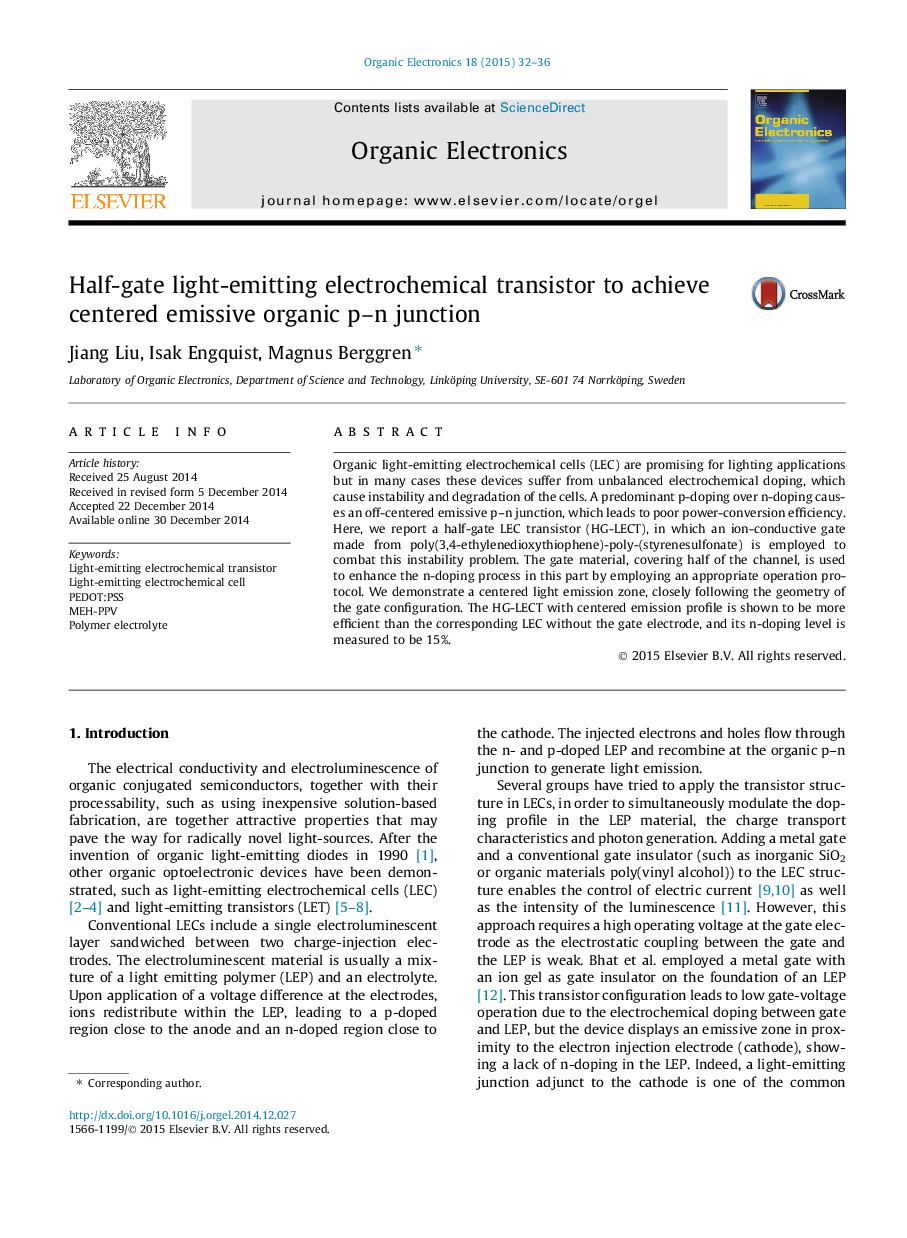| Article ID | Journal | Published Year | Pages | File Type |
|---|---|---|---|---|
| 1267222 | Organic Electronics | 2015 | 5 Pages |
•An electrochemical light-emitting transistor with a novel half-gate structure was demonstrated.•A centered emission zone in the transistor was achieved by a two-step operational protocol.•The three terminal light-emitting transistor is 40% more efficient than a conventional light-emitting electrochemical cell.
Organic light-emitting electrochemical cells (LEC) are promising for lighting applications but in many cases these devices suffer from unbalanced electrochemical doping, which cause instability and degradation of the cells. A predominant p-doping over n-doping causes an off-centered emissive p–n junction, which leads to poor power-conversion efficiency. Here, we report a half-gate LEC transistor (HG-LECT), in which an ion-conductive gate made from poly(3,4-ethylenedioxythiophene)-poly-(styrenesulfonate) is employed to combat this instability problem. The gate material, covering half of the channel, is used to enhance the n-doping process in this part by employing an appropriate operation protocol. We demonstrate a centered light emission zone, closely following the geometry of the gate configuration. The HG-LECT with centered emission profile is shown to be more efficient than the corresponding LEC without the gate electrode, and its n-doping level is measured to be 15%.
Graphical abstractFigure optionsDownload full-size imageDownload as PowerPoint slide
